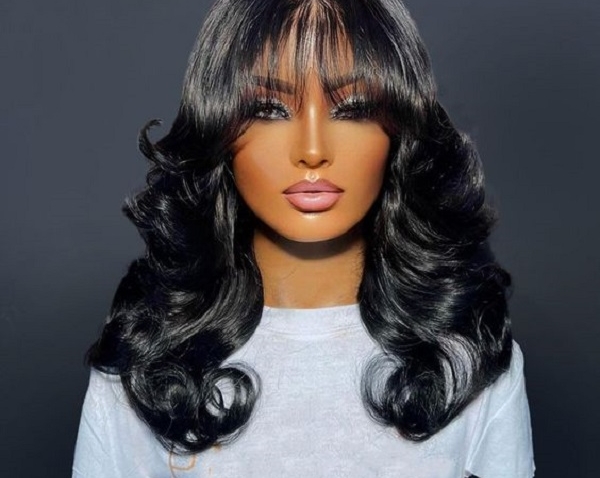
The Tradition of Wigs in the UK Judicial System
Judges wearing wigs is a striking tradition that evokes a sense of history and authority. The sight of a judge in a powdered wig is emblematic of the legal system, particularly in the United Kingdom. But why do judges wear wigs? This article explores the origins, significance, and modern perspectives surrounding this unique legal attire.
The Historical Origins of Judicial Wigs
A Tradition Rooted in History
Why do judges wear wigs? The practice of wearing wigs in the courtroom dates back to the 17th century. Wigs became fashionable among European nobility, and their adoption in the legal profession signified status and formality. In England, the trend gained momentum when King Charles II returned from exile in France and introduced the custom to his court.
Symbol of Authority
By the late 1600s, judges and lawyers adopted wigs as part of their official attire. The wig not only denoted rank but also served to create a uniform appearance in court. This consistency was crucial in establishing a formal atmosphere where justice could be administered without bias. The wig symbolized the separation of the judge’s personal identity from their role in administering justice.
The Wig in the Courtroom Today
A Mark of Tradition
Today, judges in certain jurisdictions, particularly in the UK, still don wigs as part of their formal dress in court. The tradition has persisted despite societal changes and evolving views on legal attire. For many, the wig remains a powerful symbol of the legal system’s continuity and tradition.

Maintaining the Court’s Dignity
Judicial wigs contribute to the decorum of the courtroom. They instill a sense of reverence, reminding all participants of the seriousness of legal proceedings. The visual impact of a judge in full regalia helps maintain order and respect, reinforcing the authority of the court.
The Symbolic Meaning of Wigs
Equality Before the Law
The wig serves a significant symbolic function: it represents equality. When judges don wigs, they become figures of impartiality. The uniformity of the attire helps to eliminate personal biases, ensuring that all individuals are treated equally in the eyes of the law. This notion is vital to the judicial system’s integrity.
Historical Connection to Justice
Moreover, wigs are a tangible connection to the historical roots of the legal system. By wearing them, judges acknowledge the evolution of law and the foundations upon which modern legal practices stand. This link to history adds depth and gravity to their role.
Controversies Surrounding Judicial Wigs
Calls for Modernization
Despite their historical significance, the use of wigs has faced criticism. Some argue that they are outdated and do not reflect the modern values of transparency and accessibility in the legal system. Critics suggest that moving away from such traditional attire could make the legal process more relatable to the public.
Practical Considerations
Additionally, there are practical considerations regarding wigs. Some judges find them uncomfortable, particularly in long hearings. The heat can be stifling, and the maintenance required to keep wigs in proper condition adds an extra layer of responsibility. These factors contribute to ongoing discussions about the relevance of wigs in today’s legal environment.
The Role of Wigs in Different Jurisdictions
United Kingdom
In the UK, wigs are predominantly worn in higher courts. Judges in Crown Courts and the Supreme Court still embrace this tradition, while some lower courts have moved away from it. This variation reflects a broader conversation about how traditions adapt to contemporary society.
Commonwealth Countries
Many Commonwealth countries also retain the practice of wearing wigs in court. Countries like Canada, Australia, and New Zealand have incorporated this tradition into their legal systems, albeit with some variations. The wig symbolizes a shared legal heritage among these nations, linking them back to British colonial history.
The Future of Judicial Wigs
Evolving Perspectives
As society evolves, so do perspectives on traditional practices. Discussions about the future of judicial wigs continue, with some advocating for a shift toward more modern attire. This change could reflect a legal system that is more accessible and in tune with contemporary values.

Preserving Tradition
However, there are also strong arguments for preserving the tradition. Many within the legal community believe that the wig is an essential part of the judiciary’s identity. It connects current practitioners to a long lineage of legal professionals and reinforces the stability of the legal system.
The Cultural Impact of Judicial Wigs
A Symbol in Popular Culture
Judicial wigs have transcended their courtroom origins, becoming a recognizable symbol in popular culture. They appear in films, television shows, and literature, often representing the justice system’s formality and traditions. This portrayal can influence public perception of the legal profession, highlighting both its seriousness and its historical quirks.
Education and Public Awareness
Educational institutions often use the image of judges in wigs to teach about the legal system. This imagery helps demystify the law for students and the public, fostering a greater understanding of judicial roles and responsibilities. By connecting history with contemporary practices, these representations encourage informed discussions about justice.
International Comparisons: Wigs vs. Other Legal Attires
Continental Europe
In contrast to the UK and Commonwealth countries, many European nations do not adopt wigs in their judicial attire. Instead, judges in countries like France and Germany wear robes without wigs. This difference reflects diverse legal traditions and cultural values surrounding authority and professionalism in the courtroom.
The United States
The U.S. judicial system also eschews wigs, opting for black robes as a standard for judges. This choice aligns with the American emphasis on egalitarianism, presenting judges as figures of authority without the historical baggage of wig-wearing traditions. The absence of wigs may also symbolize a break from colonial influences, highlighting a distinct American identity.
Modern Alternatives and Innovations
Alternative Attire
As conversations about judicial attire continue, some jurisdictions are experimenting with alternative forms of dress. For instance, judges may adopt more comfortable and practical clothing, balancing formality with functionality. These changes could help modernize the appearance of the judiciary while maintaining respect for tradition.
Emphasizing Professionalism
Even with the potential shift away from wigs, the emphasis on professionalism in the courtroom remains paramount. Judges must uphold the dignity of their position, regardless of their attire. The ongoing dialogue about judicial dress seeks to find the right balance between tradition and modernity.
Community Perspectives on Wigs
Public Opinion
Public opinion on judicial wigs varies widely. Some citizens appreciate the historical significance and formality that wigs bring to the courtroom. Others feel that they create a barrier between the judiciary and the community, suggesting that modern attire would make judges seem more approachable.

Legal Professionals’ Views
Legal professionals themselves have mixed feelings about wigs. While many respect the tradition and its connection to legal history, others advocate for reform, arguing that contemporary dress could better reflect the values of transparency and accessibility in the legal system. This internal debate mirrors broader societal discussions about tradition versus progress.
The Educational Role of Wigs
Teaching About Justice
Judicial wigs play a crucial role in educating the public about the legal system. By examining the significance of wigs, individuals can gain insights into the history of law, the evolution of justice, and the importance of maintaining a fair judicial process. Engaging with these topics fosters a deeper appreciation for the complexities of the legal system.
Encouraging Critical Discussion
Wigs also prompt critical discussions about the role of tradition in modern society. As people consider the relevance of wigs, they may reflect on other customs that shape our institutions. This examination encourages individuals to think critically about the balance between honoring history and embracing change.
Conclusion
In conclusion, the question of why judges wear wigs encompasses a rich tapestry of history, symbolism, and modern debate. While wigs serve to uphold tradition and signify authority, they also provoke discussions about the relevance of historical practices in today’s legal landscape. Whether viewed as a relic of the past or an enduring symbol of justice, wigs will likely remain a fascinating aspect of the judicial process for years to come.












Leave a Reply